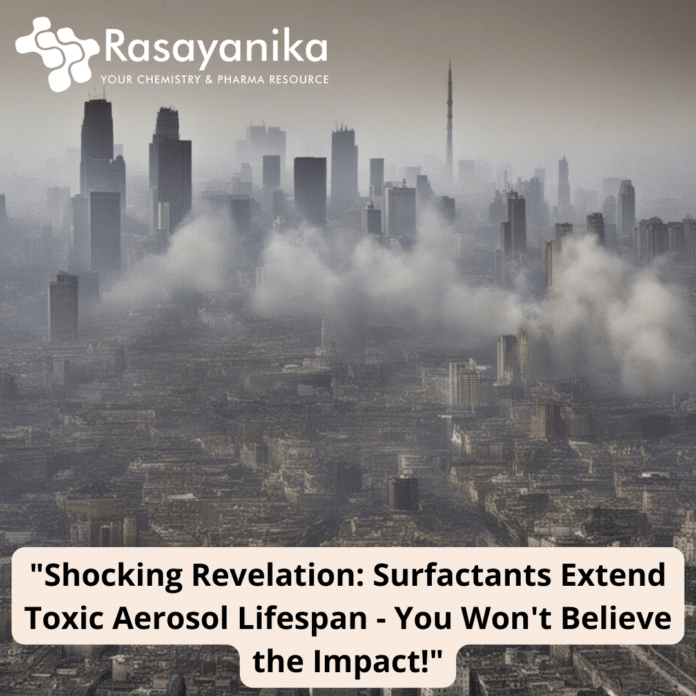Surfactants Prolong Toxic Aerosols Lifespan
Researchers at the University of Birmingham have uncovered a significant finding regarding the behavior of dangerous chemicals often found in aerosols, such as those emitted during cooking and cleaning. They have discovered that these chemicals can be “shielded” within 3D structures created by surfactants, a class of chemicals commonly present in everyday items like soaps and cleaning products. This protective effect extends the lifespan of these hazardous substances in the air. Surfactants, alternatively referred to as surface-active agents, can be located in common items like cleaning solutions and soap. They serve various functions like emulsifying, foaming, and wetting. Surfactants are also released into the environment through natural processes like sea spray and cooking activities.
The University of Birmingham, in partnership with the University of Bath and the Central Laser Facility at the Science and Technology Facilities Council, spearheaded the research project featured in the publication of Accounts of Chemical Research. Over the past five to six years, the scientists have conducted extensive research, primarily focusing on one surfactant called oleic acid. Oleic acid is a common emission from cooking and marine activities. Surfactants prolong toxic aerosols lifespan. The scientists investigated the nanoscale formation of complex structures by oleic acid and how these formations influence its interactions with other airborne chemicals. Recent experiments have expanded to explore complex mixtures of surfactants to understand their impact on various aerosol components in the air. Professor Christian Pfrang, who led the research, explained, “Aerosols are produced by everyday activities like cooking and cleaning, and with people spending most of their time indoors, it’s crucial to understand how indoor aerosols behave. Oleic acid can self-organize into various 3D nanostructures, some of which are highly viscous and can delay the aging and breakdown of key chemical components in aerosols.” Through a combination of lab experiments and computer models, the researchers found that harmful, reactive materials can be encased within aerosol particles under highly viscous, honey-like shells. This protective mechanism substantially decreases the reactivity of these chemicals and surfactants prolong toxic aerosols lifespan. This protective “coating” forms on the surface of particles, serving as a shield for harmful substances and enabling them to endure in the atmosphere for extended durations. Prof. Pfrang expressed concern, stating, “For those who spend the majority of their time indoors, this discovery should be worrisome. Aerosols contribute to air pollution and can harm human health.
These findings suggest that surfactants prolong toxic aerosols lifespan and we may be exposed to harmful chemicals for longer durations, especially after cooking and cleaning.” This research has opened doors to further investigations into how surfactant structures impact climate and air quality, both indoors and outdoors. Prof. Pfrang emphasized the need for more research to understand these processes in real-world conditions and their potential effects on human health. In the meantime, it is advisable to ensure proper ventilation by opening windows while cooking and cleaning. In summary, the study by the University of Birmingham reveals that surfactants prolong toxic aerosols lifespan and surfactants can shield hazardous aerosol chemicals, extending their presence in the air. This discovery underscores the importance of understanding indoor aerosols and their potential impact on air quality and human health.
Follow Rasayanika for more such News!

















































